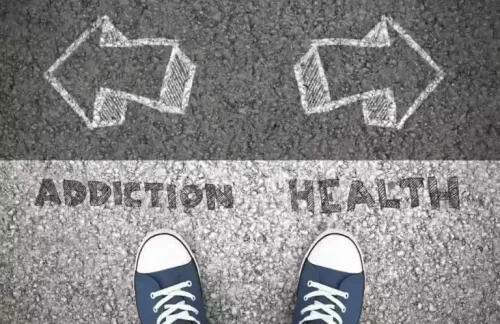
Life expectancy with cirrhosis of the liver depends on whether you are in the early or late stage of the disease. People in the early stage of the disease may live between nine and 12 years, while people in the late stages may only live two years. If you have cirrhosis of the liver, there are things you can do to help treat the condition and improve your life expectancy. The most important thing you can do is treat the cause of the condition.
Additional factors
- Alcohol dehydrogenase and acetaldehyde dehydrogenase cause the reduction of nicotinamide adenine dinucleotide (NAD) to NADH (reduced form of NAD).
- Find out the quantity of alcohol tied to liver disease and other factors that increase the chance of ALD.
- Quitting alcohol, losing weight, and adopting a healthy lifestyle are the best things you can do while living with cirrhosis of the liver.
- In addition, alcohol-exposed hepatocytes show decreased NAD+ levels, which is also an important co-factor in histone acetylation [73].
- This reduces the risk of further damage to your liver and gives it the best chance of recovering.
- The metabolism of alcohol increases the production of NADH by reducing NAD in the body.
This shifting of metabolic balance toward the production of NADH leads to the formation of glycerol phosphate, which combines with the fatty acids and becomes triglycerides, which accumulate within the liver. When lipid oxidation (lipolysis) stops due to alcohol consumption, fats accumulate in the liver and lead to «fatty liver disease.» Continued alcohol consumption https://ecosoberhouse.com/ brings the immune system into play. Interleukins with the help of neutrophils attack the hepatocytes, and swelling of the hepatocytes known as the «alcoholic hepatitis» takes place. Ongoing liver injury leads to irreversible liver damage, the cirrhosis of the liver. With alcohol abstinence, morphologic changes of the fatty liver usually revert to normal.
Who is at risk for alcohol-associated liver disease?
This occurs when the liver cannot filter waste products effectively, increasing a yellow pigment called bilirubin. This compound is formed from the breakdown of red blood cells, processed by the liver, and excreted in bile—which darkens urine. Alcohol-related liver disease actually encompasses three different liver conditions. But support, advice and medical treatment may be available through local alcohol addiction support services. ARLD does not usually cause any symptoms until the liver has been severely damaged.

Potential future treatments
A wide range of diseases and conditions can damage the liver and lead to cirrhosis. The liver damage caused by cirrhosis generally can’t be undone. But if liver cirrhosis is diagnosed early and the underlying cause is treated, further damage can be limited. Sumera I. Ilyas, M.B.B.S., Transplant Hepatologist, Mayo Clinic I’m Dr. Sumera Ilyas, a transplant hepatologist at Mayo Clinic. Whether you’re looking for answers for yourself or someone you love, we’re here to give you the best information available. Many people are embarrassed to tell their healthcare provider about their alcohol use.
- Alcohol consumption was also estimated to cause a quarter of all cirrhosis-related deaths globally in 2019.
- The National Institute on Alcohol Abuse and Alcoholism defines heavy drinking as having 5 or more drinks in 1 day on at least 5 days out of the past month.
- The quantity of alcohol in alcoholic beverages varies by volume base on the type of beverage (Table 2).
- A high level of toxins in the blood due to liver damage is known as hepatic encephalopathy.
Other medications, such as Pentoxil (pentoxifylline), may also be used. Acute alcoholic hepatitis can develop after as few as four drinks for women and five drinks for men. On further progression, there is marked steatosis, hepatocellular necrosis, and acute inflammation. Eosinophilic fibrillar material (Mallory hyaline or Mallory-Denk bodies) forms in swollen (ballooned) hepatocytes. Severe lobular infiltration of polymorphonuclear leukocytes (neutrophils) is abundantly present in this condition in contrast to most other types of hepatitis where mononuclear cells localize around portal triads.
- If decompensated cirrhosis is triggered by something like an infection or your diet, the trigger can be identified, and the condition can be reversed or controlled, either with medical treatment or through lifestyle changes.
- Cirrhosis is further categorized as compensated and decompensated.
- There are three main enzymatic metabolic pathways responsible for alcohol metabolism within the hepatocytes [20].
A liver biopsy is a procedure to remove a small sample of liver tissue for laboratory testing. A liver biopsy is commonly performed by inserting a thin needle through the skin and into the liver. If you’re concerned about your risk of liver cirrhosis, talk to your health care provider about ways you can reduce your risk. This includes medications and recreational drugs, including alcohol. After stopping drinking, which is the first step in any treatment of ALD, an assessment will be made as to the extent of the damage and the overall state of the body.
- There are instances when damage to the liver can be slowed although complete reversal generally does not happen.
- You can also recover from malnutrition by changing your diet and taking appropriate supplements (if needed).
- Characteristic ultrasonographic findings include a hyperechoic liver with or without hepatomegaly.
- In liver failure, the liver is severely damaged and can no longer function.
- Note the liver enlargement and dark color compared with the spleen (gray body in lower right).
Blood tests

While NAFLD isn’t caused by alcohol, excessive drinking can worsen liver damage. That’s why keeping your alcohol consumption in check can help protect your liver alcoholic liver disease from additional stress and prevent further complications. For most healthy people, that translates to a maximum of one drink a day for women and two for men.
Early symptoms
Long-term survival in patients with alcoholic hepatitis who discontinue alcohol use is significantly longer than in patients who continue to drink. Three-year survival approaches 90% in abstainers, whereas it is less than 70% in active drinkers. Duration of survival in both groups is considerably less than that of an age-matched population. Although the damage caused by cirrhosis is not reversible, treatment can slow the progression of the disease, alleviate symptoms, and prevent complications. In cases of early cirrhosis, it is possible to minimize damage to the liver by tackling the underlying causes.


At Healthgrades, our Editorial Team works hard to develop complete, objective and meaningful health information to help people choose the right doctor, right hospital and right care. Our writers include physicians, pharmacists, and registered nurses with firsthand clinical experience. All condition, treatment and wellness content is medically reviewed by at least one medical professional ensuring the most accurate information possible. The outlook depends on the amount of inflammation and scarring of the liver and other factors. About half of people with complications of cirrhosis survive at least 5 years after diagnosis. This stage is marked by fat deposits, liver inflammation and swelling, and liver necrosis, which means liver cells are dying.
Drinking can also lead to injuries and death by accidents, including motor vehicle crashes and falls, and can result in social and legal problems. Quitting alcohol, losing weight, and adopting a healthy lifestyle are the best things you can do while living with cirrhosis of the liver. If your condition progresses, talk with your healthcare provider about the possibility of a liver transplant. Cirrhosis of the liver can’t be reversed, but it is possible to slow or stop its progression.